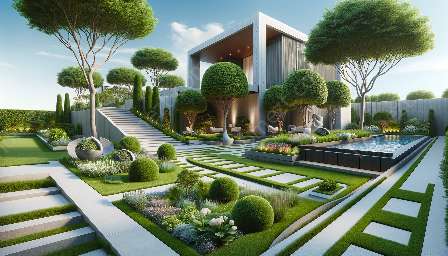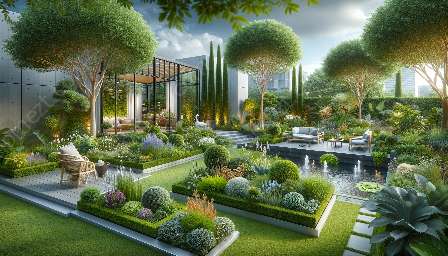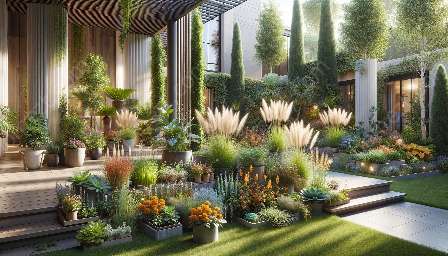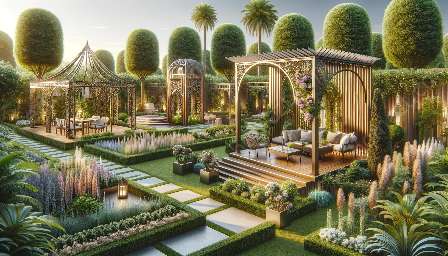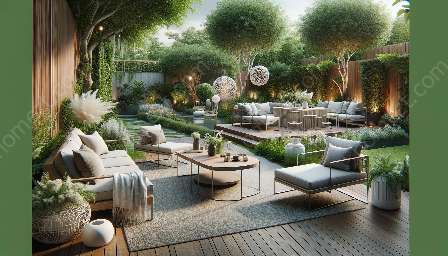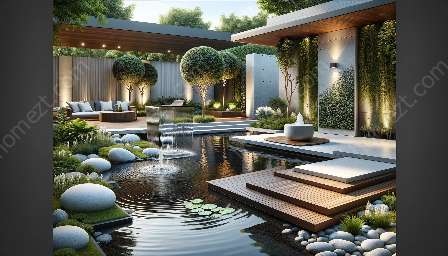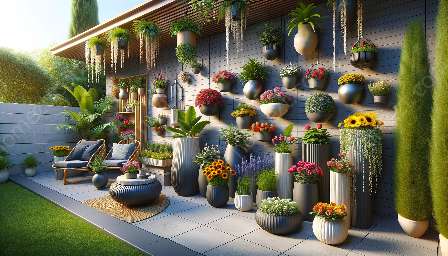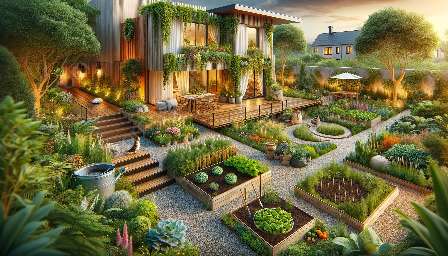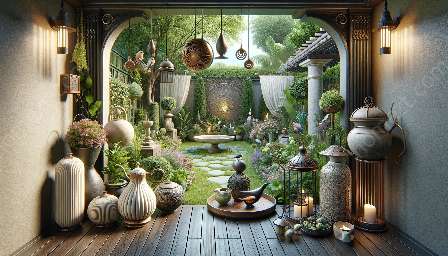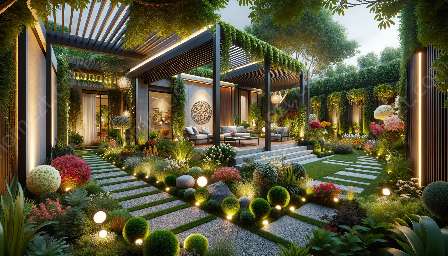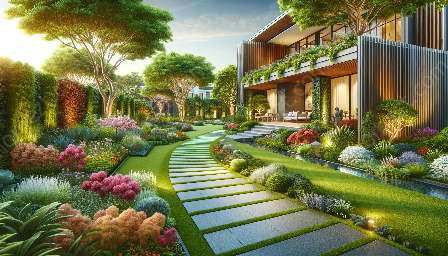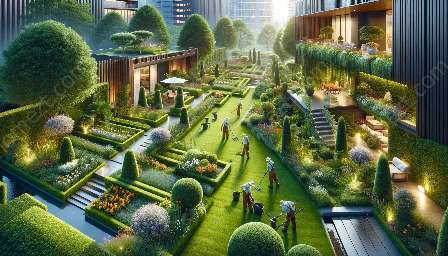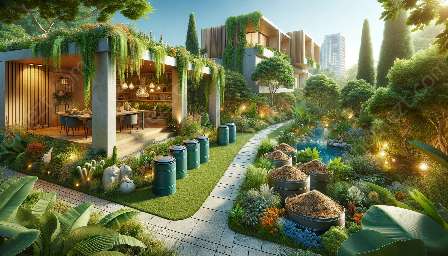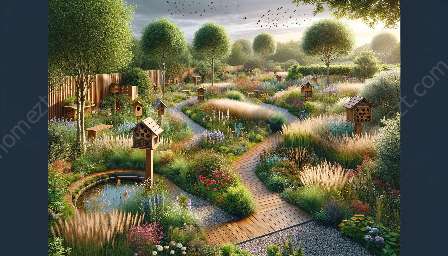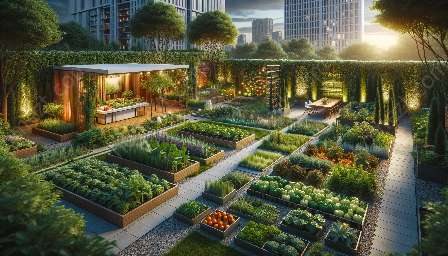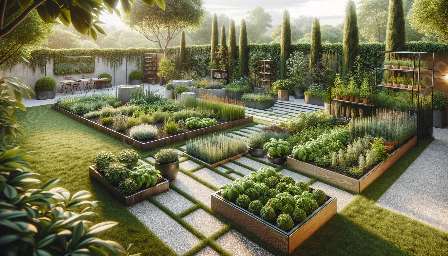When it comes to creating a beautiful garden design, incorporating seasonal planting is essential. By carefully selecting plants that thrive in different seasons, you can ensure that your outdoor space looks attractive year-round. Additionally, integrating home furnishings into your garden design can further enhance the overall aesthetic and functionality of the space. In this article, we'll explore the art of seasonal planting, how it complements garden design, and how you can integrate home furnishings to create a picturesque outdoor retreat.
The Art of Seasonal Planting
Seasonal planting involves selecting and arranging plants based on their specific growth cycles and the changing seasons. This approach allows you to create a dynamic and visually appealing garden that evolves throughout the year. Here's a breakdown of how seasonal planting can enhance your garden design in each season:
Spring:
Spring is a time of renewal, making it the perfect season to showcase vibrant blooms and fresh foliage. Tulips, daffodils, and cherry blossoms are popular choices for spring planting, as they add pops of color and energy to the garden. Pairing these flowering plants with evergreen shrubs can create a balanced and textural look that transitions seamlessly into summer.
Summer:
Summer is all about creating a lush and inviting outdoor environment. Incorporating heat-tolerant plants such as lavender, hydrangeas, and sunflowers can add depth and fragrance to your garden. This time of year is also ideal for planting herbs and vegetables, allowing you to create a functional and visually appealing edible garden.
Fall:
As the weather cools down, the colors of autumn take center stage. Plants like mums, ornamental grasses, and flowering kale can provide a beautiful backdrop for your garden during the fall season. Consider adding decorative gourds and pumpkins to add a festive touch to your outdoor space.
Winter:
Winter gardens can be just as captivating as those in other seasons. Evergreen trees and shrubs, such as pine, cedar, and holly, can provide structure and form to your garden during the colder months. Additionally, incorporating winter-blooming flowers like camellias and hellebores can add subtle bursts of color to an otherwise dormant landscape.
Integrating Seasonal Planting into Garden Design
When integrating seasonal planting into your garden design, it's essential to consider factors such as color, texture, and plant placement. Here are some tips to help you create a cohesive and visually appealing garden:
- Choose a focal point: Whether it's a striking perennial bed or a decorative garden sculpture, having a focal point can anchor your garden design and draw the eye.
- Layer your planting: Incorporate a mix of ground covers, mid-height plants, and taller specimens to create depth and visual interest in your garden beds.
- Consider your color palette: Select plants with complementary or contrasting colors to create a cohesive and visually stimulating garden.
- Embrace texture: Utilize plants with differing leaf shapes and textures to add depth and dimension to your garden design.
- Utilize seasonal containers: Decorative pots and containers can be used to showcase seasonal plants and flowers, adding flexibility and variety to your garden design.
Enhancing Outdoor Spaces with Home Furnishings
Integrating home furnishings into your garden design can elevate the functionality and aesthetic appeal of your outdoor space. By carefully selecting furniture, decor, and lighting, you can create an inviting and comfortable environment for relaxation and entertainment. Here's how you can enhance your garden design with home furnishings:
Seating areas:
Creating designated seating areas with comfortable outdoor furniture allows you to enjoy your garden while entertaining guests or simply unwinding with a good book. Consider incorporating weather-resistant cushions and pillows to add comfort and style.
Decorative accents:
Adding decorative accents such as ornamental lanterns, wind chimes, and outdoor artwork can infuse personality and charm into your garden design. These elements can tie in with the overall theme of your home furnishings, creating a cohesive and inviting outdoor space.
Outdoor lighting:
Strategic placement of outdoor lighting can extend the functionality of your garden into the evening hours. Whether it's pathway lighting, string lights, or lanterns, proper lighting can enhance the ambiance and safety of your outdoor space.
Alfresco dining:
Designating a space for outdoor dining with a stylish dining set can transform your garden into a social gathering place. Consider incorporating a shade umbrella or pergola to provide relief from the sun and add a touch of elegance to your outdoor dining area.
Water features:
Adding a water feature, such as a fountain or birdbath, can introduce soothing sounds and visual interest to your garden design. The gentle babble of water can create a tranquil atmosphere, further enhancing the overall experience of your outdoor space.
Bringing it All Together
Integrating seasonal planting with garden design and home furnishings creates a harmonious and inviting outdoor space that can be enjoyed throughout the year. By carefully selecting plants that thrive in each season, incorporating elements of home furnishings, and considering factors such as color, texture, and functionality, you can transform your garden into a picturesque retreat. Whether you're looking to create a serene oasis for relaxation or an outdoor entertaining area for gatherings, the combination of seasonal planting, garden design, and home furnishings offers endless opportunities for creativity and enjoyment.

